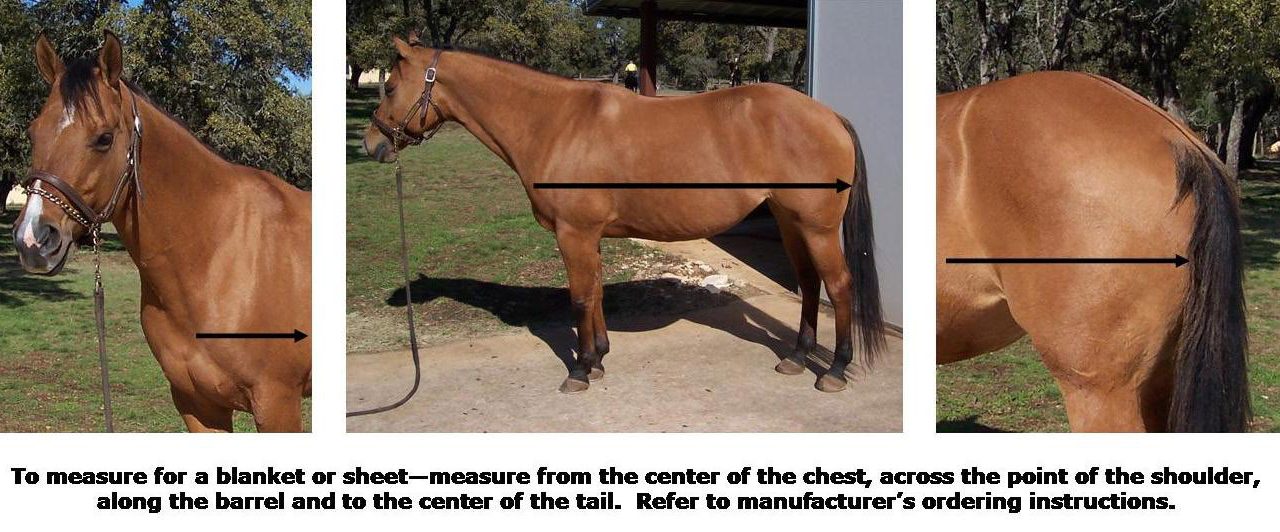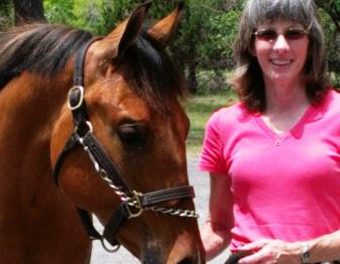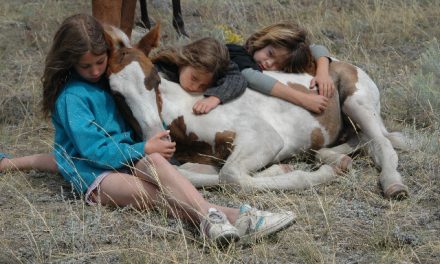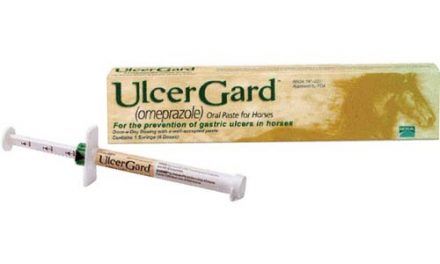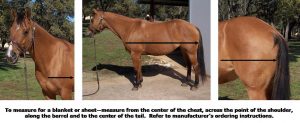 “Back stiff,” Walter groaned.
“Back stiff,” Walter groaned.
“Well, we’ll do a few exercises to supple you a little. It’ll loosen you up.”
“Back sore, back aching,” he protested.
“I’m sorry to hear that. I know backaches can be very uncomfortable. You give me one every time I put shoes on you and you lean on me.”
“Maybe I should just stay in my stall and eat,” he suggested.
“Maybe I should take a look, find the problem and correct it,” I countered.
I looked at Walter’s blanket. It seemed to fit perfectly. It was snug around the neck and covered his shoulders. When a blanket is loose around a horse’s neck it will slide forward and backward, rubbing on his withers and the points of his shoulders. That kind of rubbing is not good for backs or withers. The blanket should not rest across the back behind the withers, but should cover the withers. There was a good overlap across Walter’s chest with no gap, so I knew the fit in that area was okay.
The surcingle was adjusted so I could just get my hand sideways (about four inches) between the horse and the surcingle. The leg straps were adjusted in about the same way. They were loose enough so Walter could walk and move comfortably, but not so loose he could get a foot caught in one.
The hind leg straps were crossed at the center between Walter’s hind legs, which I knew would reduce the possibility of him getting a foot caught, but still keep the blanket from rotating. Everything fit and everything was as safe as possible. Nothing should be causing discomfort to his back.
I pulled his blanket off and looked at the label – size 76. To measure a horse for a blanket, you start at the center of the horse’s chest, take the tape across the point of shoulder, along his side, ending in the middle of his tail. This measurement is 76 inches for Walter. I knew Walter’s blanket fit properly.
While his blanket was off, I stood back and observed Walter’s back.
There were no obvious swellings, welts, sores or scratches. His back muscles were symmetrical. Nothing observable was amiss.
Palpation was the next step. I pressed my hand down firmly and moved it along Walter’s back checking various locations. No visible signs of discomfort. I put my right hand on top of my left hand and applied more pressure and moved along his back, carefully checking the wither area, his loin and the points of both hips. I examined his withers by pinching my fingers and thumb firmly on opposite sides.
Nothing.
So I used my fingertips very firmly on both sides of Walter’s back bone. Sometimes a ticklish horse will react to this type of palpation, but it was obvious this horse was neither ticklish nor in pain. A sore horse will definitely react to the intensified finger pressure and you’ll know if he’s in pain.
Nothing.
“Must be the saddle,” I said. “Let’s put it on.”
“Do we have to?” Walter whined.
“Yes. We must find out what is causing you so much discomfort.”
I put the saddle pad in place, and then the saddle.
The gullet or pommel of the saddle must have adequate clearance over the withers. The pad should be able to be pushed up, or tented, into the gullet so there is no pressure directly on the withers.
I was careful not to move the saddle and pad forward, which will be against the way the hair grows. The hair must be smooth under the pad. The saddle should rest in its most natural position on the horse’s back. If a saddle is too far forward, you can see that the fenders bottoms are tilted upward. If the fender bottoms are level, then the saddle is generally in perfect position on the horse’s back.
Once the saddle was in the proper position on his back, I checked to make sure the saddle itself was not too long, nor the pad too big. I didn’t want either to rub Walter’s loin area.
Still a perfect fit. Now the final test – enough work to produce a little sweat under the saddle pad.
I bridled Walter, and stepped up. He didn’t flinch, sink, fidget or pin his ears, all the signs a horse’s back might hurt.
No reaction; Walter just acted bored.
We walked awhile to allow Walter to relax and the saddle to settle. I stepped down and checked the cinch. It was snug, but I could easily get my fingers between it and Walter’s side. I stepped back up, satisfied the saddle was on tight enough, but not too tight, and Walter was ready to perform.
We did some bending and conditioning exercises, a little loping, some extended trotting and then we stopped.
I pulled the saddle and the sweat under the pad was even and the exact area covered by the pad. No dry spots, and both sides were the same. The saddle fit well.
“Walter,” I said. “Your back problems must be anatomical. I think I’d better take you to the equine hospital and have them do a complete work up on you. You probably won’t get any feed before the tests. What do you think?”
“I think the problem was semantics. How about no equine hospital, a few treats for the hard work I just did, and feed at the regular time?”
“Semantics?” I questioned.
“Yeah. I mistakenly said ‘back stiff.’ What I meant to say was, ‘back off’.”
* From “Walter (A Horse, of Course) Spills the Oats” Copyright©2000 by Don Blazer. Published by Success Is Easy. Learn more about saddle fitting, take the online course: “Bits, Saddle Fitting and Hoof Balance” Earn a certificate upon completion. www.horsecoursesonline.com

